Hazmat sensors for UAVs in emergencies are specialized devices you'll find mounted on drones to detect and monitor dangerous materials in high-risk situations. These sensors can identify chemical, radiological, and biological threats from a safe distance. You'll see various types, including chemical detectors, radiation monitors, and biological threat identifiers. They operate using principles like spectroscopy, ionization detection, and DNA analysis. During emergencies, these sensors provide real-time data transmission, allowing for quick decision-making and mapping of hazardous areas. With their ability to cover large areas efficiently and access hard-to-reach locations, these sensors are revolutionizing emergency response. The possibilities for their application are expanding rapidly.
Types of Hazmat Sensors
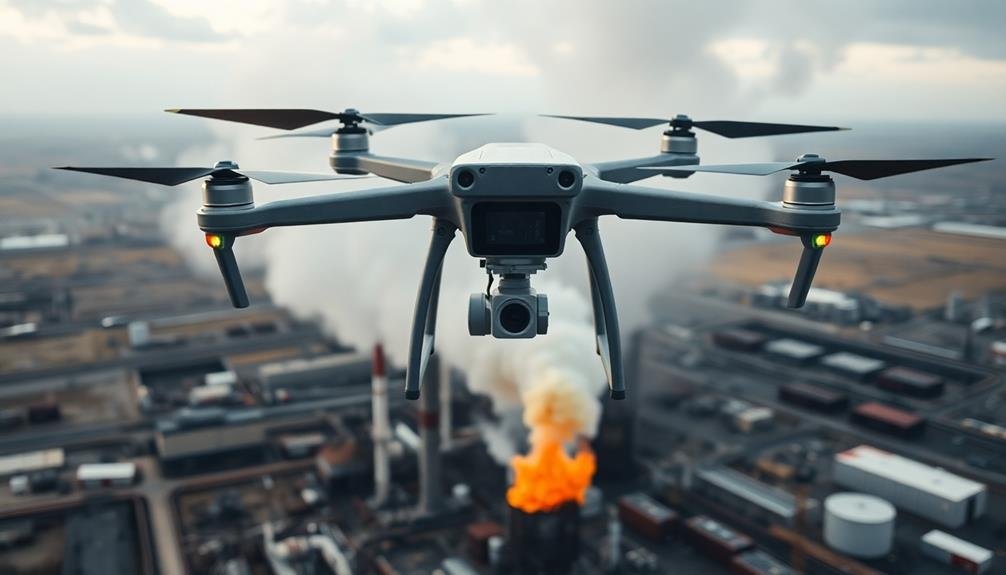
Various types of hazmat sensors can be integrated into UAVs for detecting and monitoring hazardous materials. These sensors fall into several categories based on the substances they're designed to detect.
Chemical sensors are vital for identifying toxic gases, vapors, and aerosols. They include photoionization detectors (PIDs) for volatile organic compounds, electrochemical sensors for specific gases like carbon monoxide, and metal oxide semiconductors for a range of chemicals.
Radiation sensors, such as Geiger-Müller tubes and scintillation detectors, are essential for detecting ionizing radiation from radioactive materials. They can measure alpha, beta, gamma, and neutron radiation levels.
Biological sensors are used to detect pathogens, toxins, and other biological hazards. These often employ immunoassays or DNA analysis techniques.
You'll also find multi-gas detectors that combine several sensor types in one unit, offering broader detection capabilities. Some advanced sensors use spectroscopic methods like infrared or Raman spectroscopy for more precise identification of substances.
Thermal imaging cameras can help locate chemical spills or leaks by detecting temperature differences.
Additionally, particulate matter sensors measure airborne contaminants, which is important in scenarios involving dust, smoke, or aerosols.
Operating Principles of UAV Sensors
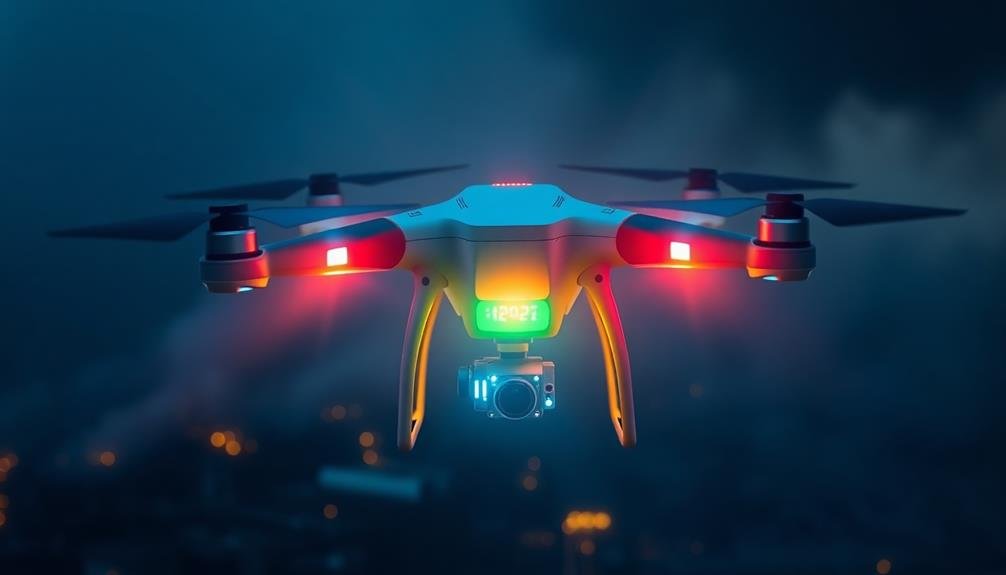
The operating principles of UAV-mounted hazmat sensors rely on sophisticated detection mechanisms tailored to specific hazardous materials. These sensors use various technologies to identify and measure dangerous substances in the air, on surfaces, or in liquids.
For gaseous hazards, you'll find sensors that employ infrared spectroscopy, photoionization detection, or electrochemical cells. They analyze the unique spectral signatures or chemical reactions of different gases to determine their presence and concentration.
Radiation sensors on UAVs typically use scintillation detectors or Geiger-Müller tubes to measure ionizing radiation levels.
When it comes to liquid or solid hazards, UAV sensors may use Raman spectroscopy or X-ray fluorescence to identify chemical compounds based on their molecular structure. Some advanced sensors combine multiple detection methods for more thorough analysis.
Many UAV hazmat sensors also incorporate GPS technology and data logging capabilities. This allows them to create detailed maps of contaminated areas, showing the distribution and concentration of hazardous materials.
The data is often transmitted in real-time to ground control stations, enabling quick decision-making during emergency responses.
Chemical Detection Capabilities

With advanced sensor technologies, UAV-mounted chemical detectors can identify and measure a wide range of hazardous substances. These sensors typically use spectroscopic techniques, such as infrared or Raman spectroscopy, to analyze the chemical composition of gases, vapors, and aerosols in the air.
You'll find that modern UAV sensors can detect various classes of chemicals, including toxic industrial compounds, chemical warfare agents, and volatile organic compounds.
The sensitivity of these sensors allows for the detection of substances at parts per million (ppm) or even parts per billion (ppb) levels. You can expect real-time data transmission, enabling rapid decision-making in emergency situations.
Many UAV-based chemical detection systems also incorporate multi-gas sensors, allowing for simultaneous detection of multiple hazardous substances.
Some advanced systems feature machine learning algorithms that can identify unknown chemical signatures by comparing them to extensive databases. This capability is particularly useful when dealing with complex mixtures or novel compounds.
You'll also find that many UAV chemical sensors are designed to operate in harsh environments, withstanding extreme temperatures, humidity, and dust, ensuring reliable performance in various emergency scenarios.
Radiological Monitoring With Drones

You'll find that drones equipped with gamma radiation detectors can effectively monitor radiological hazards from a safe distance.
These UAVs can detect various types of gamma-emitting radioactive materials, providing essential information about potential threats.
As the drone surveys an area, it can transmit real-time data to ground operators, allowing for immediate analysis and response to radiological incidents.
Gamma Radiation Detection Capabilities
Drones equipped with gamma radiation sensors are revolutionizing radiological monitoring capabilities. These UAVs can detect and measure gamma radiation levels from a safe distance, allowing you to assess potentially hazardous areas without risking human exposure.
The sensors typically use scintillation detectors or semiconductor materials to convert gamma rays into electrical signals, which are then processed and transmitted in real-time.
You'll find that these drones can cover large areas quickly, creating detailed radiation maps that show hotspots and contamination patterns. They're particularly useful in nuclear emergency response, where they can provide essential data on radiation levels and dispersion.
The sensors' sensitivity allows for the detection of even low levels of gamma radiation, helping you identify subtle anomalies or gradual changes over time.
Many gamma radiation detection drones also incorporate GPS and altitude data, enabling precise localization of radiation sources. This feature is invaluable when you're trying to pinpoint the origin of a leak or contamination.
Some advanced systems can even differentiate between various radioactive isotopes, giving you more thorough information about the nature of the radiation threat you're facing.
Real-Time Data Transmission
Real-time data transmission is a critical feature of radiological monitoring drones. It allows for immediate analysis and decision-making during hazardous material incidents. You'll find that these UAVs can send radiation readings, GPS coordinates, and visual data to ground control stations instantly. This rapid information flow enables emergency responders to assess the situation and take appropriate action without delay.
The drones typically use secure, high-bandwidth communication channels to guarantee data integrity and prevent interference. You can expect real-time updates on radiation levels, hotspot locations, and plume movement. This continuous stream of information helps you create dynamic risk maps and adjust response strategies on the fly.
Here's a breakdown of common data transmission features:
| Feature | Purpose | Benefit |
|---|---|---|
| 4G/5G Connectivity | High-speed data transfer | Minimal latency |
| Encrypted Channels | Secure communication | Data protection |
| Mesh Networking | Extended range | Improved coverage |
| Cloud Integration | Remote access | Global monitoring |
| Automatic Alerts | Threshold notifications | Rapid response |
Biological Threat Identification

You'll find that UAVs equipped with biological threat sensors can rapidly identify dangerous pathogens in the air.
These drones can use specialized sampling methods to collect airborne particles and analyze them in real-time.
With advanced detection capabilities, you're able to quickly pinpoint potential biological hazards and respond accordingly.
Pathogen Detection Capabilities
Beyond the domain of chemical detection, UAVs equipped with hazmat sensors are making significant strides in pathogen detection capabilities. These advanced systems can identify various biological threats, including bacteria, viruses, and other harmful microorganisms. By utilizing sophisticated sampling techniques and real-time analysis, UAVs can rapidly assess the presence of pathogens in air, water, or on surfaces.
The latest pathogen detection sensors employ multiple technologies to guarantee accurate and swift identification. Here's a breakdown of common detection methods:
| Method | Principle | Advantages |
|---|---|---|
| PCR | DNA amplification | High sensitivity, specific |
| Immunoassay | Antibody-antigen reactions | Rapid results, versatile |
| Spectroscopy | Light absorption patterns | Non-destructive, real-time |
You'll find that these UAV-mounted sensors can detect a wide range of pathogens, from common influenza strains to more severe threats like anthrax or botulinum toxin. They're particularly useful in emergency situations where rapid identification is vital for containment and treatment. By providing quick, accurate results, these systems help emergency responders make informed decisions and take appropriate action to protect public health and safety.
Rapid Biological Sampling Methods
How do UAVs equipped with hazmat sensors rapidly collect biological samples for threat identification? These drones use advanced sampling techniques to gather data quickly and efficiently.
You'll find that many UAVs employ air filtration systems that capture airborne particles as they fly through contaminated areas. These filters can trap bacteria, viruses, and other biological agents for later analysis.
Some drones are equipped with specialized collection devices, such as electrostatic precipitators or cyclone collectors, which can concentrate airborne particles for more effective sampling. Others use swab-based systems that can collect surface samples from various materials.
You'll also see UAVs with onboard liquid sampling capabilities, allowing them to collect water or other fluid samples from potentially contaminated sources.
Many modern hazmat sensor drones incorporate real-time analysis tools, such as portable PCR (polymerase chain reaction) devices or spectroscopic sensors. These technologies enable rapid on-site identification of biological threats, reducing response times in emergency situations.
Some advanced systems even use AI-powered algorithms to quickly process and interpret sampling data, providing first responders with immediate actionable information about potential biological hazards in the area.
Integration With UAV Systems

Integrating hazmat sensors with UAV systems presents unique challenges and opportunities. You'll need to evaluate factors like payload capacity, power requirements, and data transmission when incorporating these sensors into your drone setup. The integration process often involves customizing mounting hardware and developing specialized software interfaces to guarantee seamless communication between the sensor and the UAV's control systems.
When integrating hazmat sensors, you'll want to focus on:
| Integration Aspect | Considerations |
|---|---|
| Payload | Weight, size, balance |
| Power | Battery life, voltage requirements |
| Data Transmission | Bandwidth, range, encryption |
| Environmental Protection | Sensor shielding, weatherproofing |
| Calibration | In-flight adjustments, accuracy |
You'll also need to address regulatory compliance, as flying UAVs with hazmat sensors may require special permissions. It's essential to confirm that the integration doesn't compromise the drone's flight characteristics or the sensor's accuracy. By carefully planning the integration process, you can create a powerful tool for emergency responders and environmental monitoring teams. Remember to test the integrated system thoroughly in various conditions to validate its performance and reliability before deploying it in real-world scenarios.
Real-Time Data Transmission
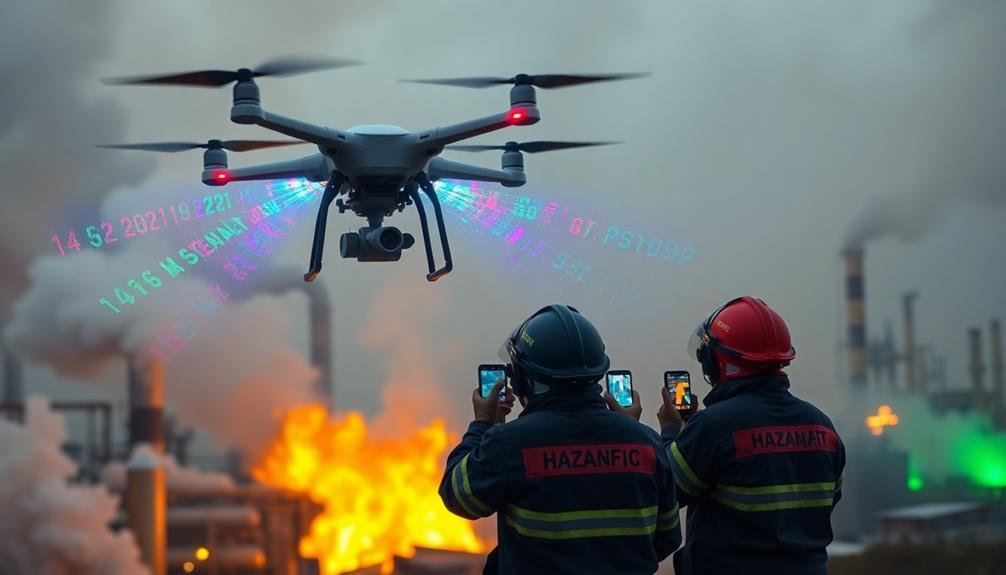
The lifeblood of effective hazmat detection using UAVs is real-time data transmission. You'll find that this capability allows for immediate decision-making and rapid response in emergency situations.
UAVs equipped with hazmat sensors can relay essential information about chemical concentrations, radiation levels, or biological agents to ground control stations instantly.
You'll need to take into account the communication protocols used for this data transfer. Many systems employ secure, encrypted wireless networks to transmit sensor readings. These networks often use 4G/5G cellular connections or dedicated radio frequencies.
You'll want to guarantee that the data link is robust and resistant to interference, especially in disaster-stricken areas where infrastructure might be compromised.
The transmitted data isn't just raw numbers; it's often packaged with GPS coordinates and time stamps. This allows you to create real-time hazard maps and track the spread of dangerous substances.
You can also integrate this data with other emergency management systems for a thorough response. Remember, the speed and reliability of this data transmission can mean the difference between containment and catastrophe in hazardous material incidents.
Sensor Accuracy and Sensitivity

Sensor accuracy and sensitivity form the backbone of reliable hazmat detection in UAV applications. You'll find that these factors are essential for identifying and measuring hazardous materials in emergency situations. High-quality sensors can detect minute concentrations of chemicals, gases, or radiation, allowing for early warning and precise assessment of potential threats.
When selecting hazmat sensors for your UAV, you'll want to take into account their detection limits and response times. The best sensors can detect parts per million (ppm) or even parts per billion (ppb) of hazardous substances. They should also provide quick readings, ideally within seconds, to enable rapid decision-making in critical situations.
You'll need to verify your sensors are calibrated regularly and can withstand environmental factors like temperature fluctuations, humidity, and atmospheric pressure changes. Cross-sensitivity is another important aspect to bear in mind, as some sensors may react to multiple substances, potentially leading to false positives.
To mitigate this, you can use multi-sensor arrays or advanced algorithms that help differentiate between similar compounds. By prioritizing sensor accuracy and sensitivity, you'll enhance your UAV's effectiveness in hazmat detection and emergency response.
Environmental Factors Affecting Readings

Environmental conditions play a vital role in the accuracy and reliability of hazmat sensor readings on UAVs. You'll need to take into account various factors that can affect your sensor's performance in the field. Temperature fluctuations, humidity levels, and atmospheric pressure changes can all impact the sensitivity and response time of your hazmat sensors.
Wind speed and direction are essential elements to account for, as they can influence the dispersion of chemical vapors and gases. You'll want to verify your UAV's flight path takes these factors into account to obtain the most accurate readings possible.
Other environmental factors that can affect your hazmat sensor readings include:
- Dust and particulate matter in the air
- Electromagnetic interference from nearby equipment
- Sunlight and UV radiation exposure
- Precipitation (rain, snow, or fog)
- Altitude changes during flight
To mitigate these environmental impacts, you should calibrate your sensors regularly and use protective housings when necessary.
It's also important to cross-reference your readings with data from multiple sources and employ redundant sensor systems when possible. By understanding and accounting for these environmental factors, you'll greatly enhance the reliability of your hazmat sensor readings during UAV operations.
Emergency Response Applications
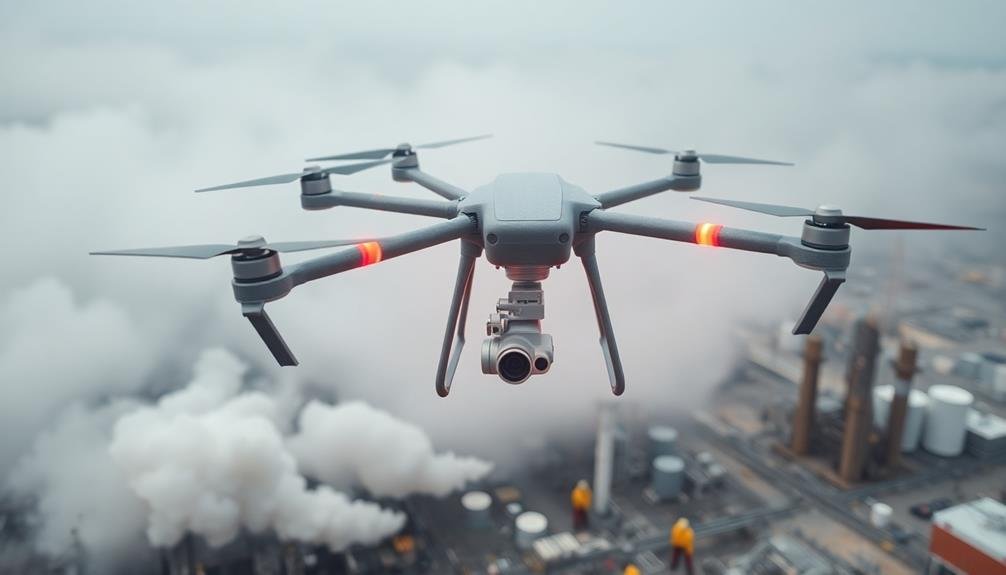
When disaster strikes, UAVs equipped with hazmat sensors become invaluable tools for emergency responders. They allow you to quickly assess dangerous situations from a safe distance, providing essential information for decision-making and resource allocation.
You'll find these drones particularly useful in scenarios involving chemical spills, industrial accidents, or terrorist attacks. They can detect and identify hazardous materials, measure contamination levels, and map affected areas. This data helps you determine safe zones, plan evacuations, and guide decontamination efforts.
Here's a breakdown of common emergency applications:
| Scenario | UAV Role | Benefits |
|---|---|---|
| Chemical Spill | Detect gas plumes | Rapid assessment, worker safety |
| Nuclear Incident | Monitor radiation | Real-time data, wide coverage |
| Industrial Fire | Identify toxic fumes | Informed firefighting, public safety |
| Terrorist Attack | Locate chemical agents | Swift response, minimized exposure |
Legal and Regulatory Considerations

When integrating hazmat sensors into UAVs, you'll need to navigate complex legal and regulatory landscapes.
You must guarantee your UAV system meets certification and compliance requirements set by aviation authorities and hazardous materials regulatory bodies.
Additionally, you'll need to address privacy and data protection concerns, as these sensors may collect sensitive information during operations.
Certification and Compliance Requirements
Maneuvering the complex landscape of certification and compliance requirements is vital for deploying hazmat sensors on UAVs. You'll need to guarantee your equipment and operations meet stringent safety standards set by regulatory bodies like the FAA and EPA. These agencies oversee the use of UAVs and hazardous materials detection, respectively.
To comply with regulations, you must:
- Obtain proper UAV pilot certification
- Register your UAV with the FAA
- Secure necessary permits for hazmat sensing operations
- Verify your sensors meet calibration and accuracy standards
- Maintain detailed flight and sensor data logs
You'll also need to stay up-to-date with evolving regulations, as the field of UAV-based hazmat detection is rapidly advancing.
It's important to work closely with local authorities and emergency response teams to align your operations with their protocols. Remember, non-compliance can result in hefty fines and legal consequences.
By adhering to these requirements, you'll not only avoid penalties but also contribute to safer and more effective emergency response efforts.
Regular training and equipment maintenance are key to maintaining compliance and guaranteeing the reliability of your hazmat sensing UAV operations.
Privacy and Data Protection
Nearly all hazmat sensing operations using UAVs involve collecting sensitive data, making privacy and data protection essential legal and regulatory considerations.
You'll need to comply with local, state, and federal privacy laws when operating hazmat sensors on UAVs. This includes obtaining necessary permissions and guaranteeing data collected doesn't infringe on individuals' privacy rights.
Implement strict data protection measures to safeguard the information gathered during hazmat sensing missions. Use encryption for data transmission and storage, and limit access to authorized personnel only.
You're responsible for protecting personal information that may be inadvertently collected during operations, such as images of individuals or property.
Develop clear policies for data retention and disposal. Determine how long you'll keep the collected data and establish secure methods for deleting it when it's no longer needed.
You should also have protocols in place for reporting any data breaches or unauthorized access.
Be transparent about your data collection practices. Inform relevant parties about the type of data you're collecting, how it'll be used, and who'll have access to it.
This transparency helps build trust and guarantees compliance with data protection regulations.
Future Developments in Hazmat Sensing
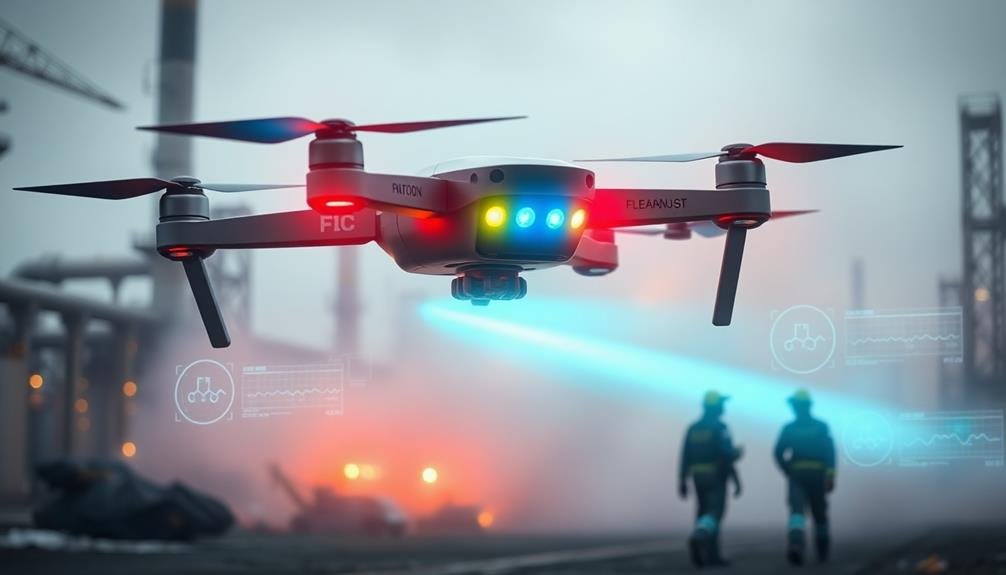
The field of hazmat sensing for UAVs is constantly evolving, with researchers and engineers continually pushing the boundaries of what's possible.
You'll see exciting advancements in sensor technology, data processing, and integration with other systems in the coming years.
Future developments in hazmat sensing for UAVs will likely include:
- Miniaturization of sensors for increased payload capacity
- AI-powered real-time analysis of hazardous materials
- Integration with 5G networks for faster data transmission
- Multi-sensor fusion for more accurate detection and identification
- Development of self-cleaning sensors for extended mission durations
You can expect these innovations to enhance the capabilities of UAVs in emergency response situations.
Improved sensor accuracy and sensitivity will allow for the detection of even trace amounts of hazardous materials, while faster data processing will enable quicker decision-making in critical situations.
As battery technology advances, you'll see longer flight times and increased range for UAVs equipped with hazmat sensors.
Additionally, the integration of hazmat sensing capabilities with other emerging technologies, such as augmented reality and robotics, will create more thorough and efficient emergency response systems.
Frequently Asked Questions
How Much Do Hazmat Sensors for UAVS Typically Cost?
You'll find hazmat sensors for UAVs range widely in price. Basic models start around $1,000, while advanced, multi-gas detectors can cost upwards of $10,000. Prices vary based on sensor accuracy, durability, and detection capabilities.
What Training Is Required for Operators of UAVS With Hazmat Sensors?
You'll need specialized training to operate UAVs with hazmat sensors. It typically includes courses on hazardous materials, flight regulations, sensor operation, and emergency procedures. You'll also need to obtain proper certifications and maintain ongoing professional development.
How Long Do Batteries Last on UAVS Equipped With Hazmat Sensors?
You'll find battery life varies widely for UAVs with hazmat sensors. It typically ranges from 20-60 minutes, depending on the sensor type, UAV size, and flight conditions. You'll need to plan missions accordingly and carry spare batteries.
Can Hazmat Sensors for UAVS Detect Multiple Types of Threats Simultaneously?
Yes, you'll find that many hazmat sensors for UAVs can detect multiple threats at once. They're designed to identify various chemical, biological, and radiological hazards simultaneously, giving you a thorough picture of potential dangers in emergency situations.
Are There Size or Weight Limitations for Hazmat Sensors on Smaller UAVS?
Yes, there are size and weight limitations for hazmat sensors on smaller UAVs. You'll need to evaluate payload capacity carefully. Compact, lightweight sensors are available, but they may have reduced sensitivity or detection range compared to larger models.
In Summary
You've explored the vital role of hazmat sensors for UAVs in emergency situations. You've learned about various sensor types, their operating principles, and detection capabilities for chemical, radiological, and biological threats. You've considered environmental factors and regulatory issues. As technology advances, you'll see even more sophisticated hazmat sensing capabilities for drones. Remember, these tools are invaluable for first responders, helping to save lives and protect communities during hazardous material incidents.
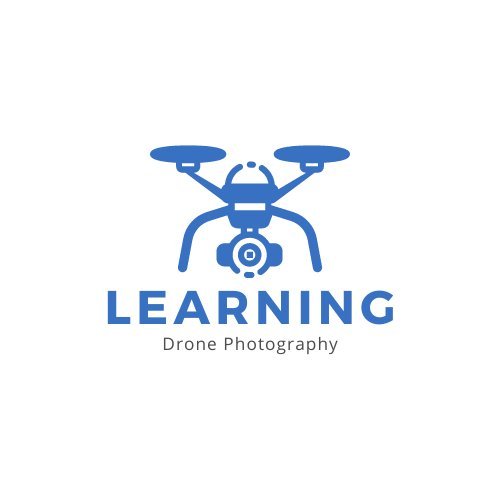
As educators and advocates for responsible drone use, we’re committed to sharing our knowledge and expertise with aspiring aerial photographers.

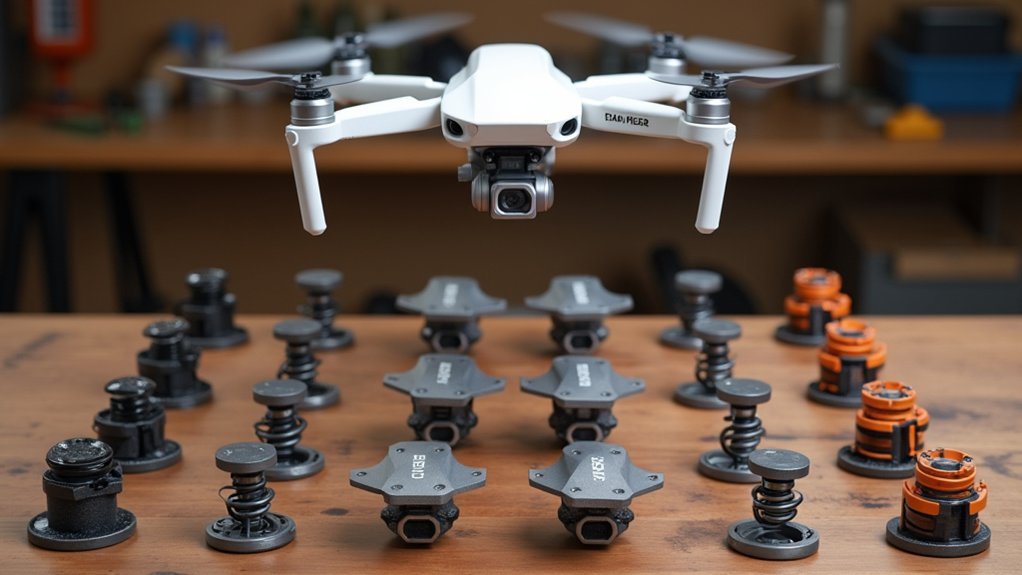
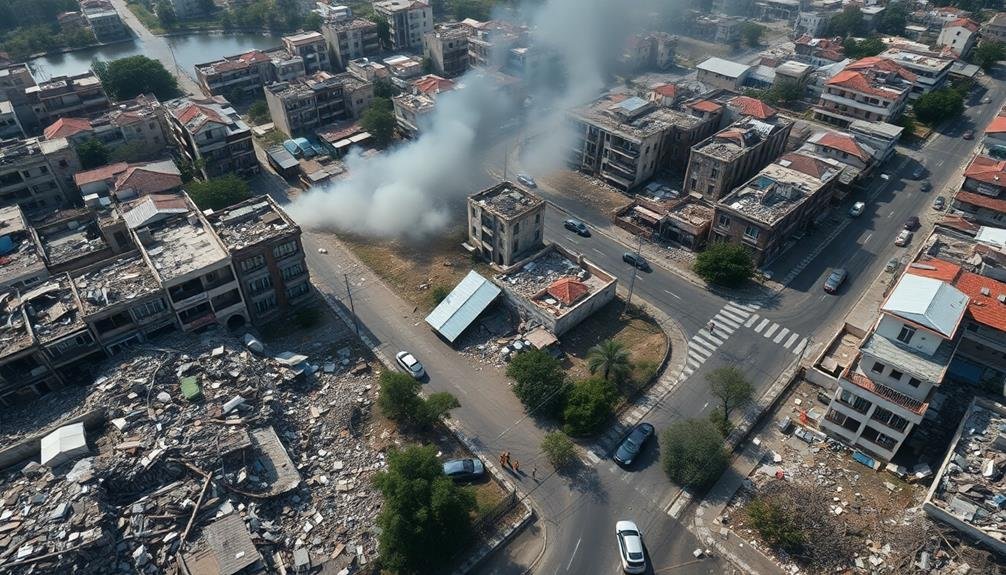
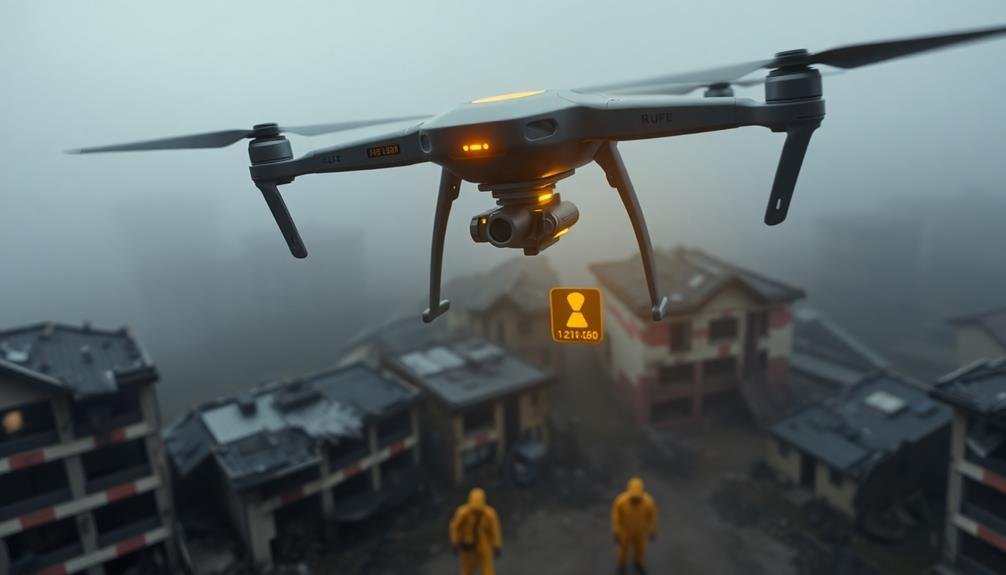
Leave a Reply